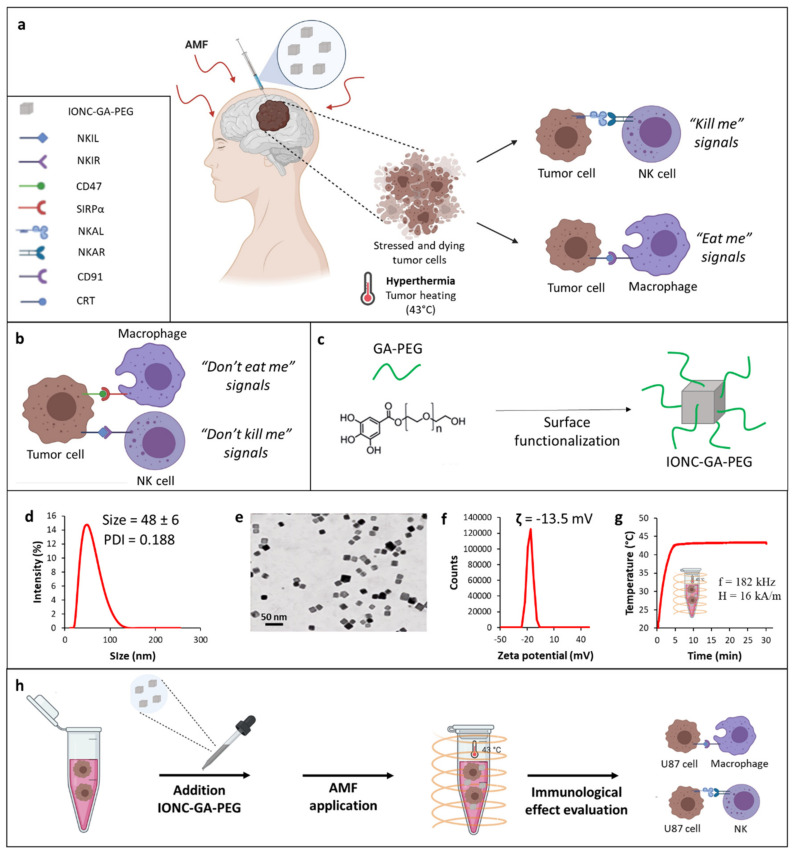Figure 1.
Schematic representation of the innate immunological effect of mild MHT (43 °C) on tumor cells (a). Tumor cells express on their surface anti−phagocytic molecules (“don’t eat me signal”), such as CD47, whereby binding to SIRP−α receptor on macrophages impedes macrophage phagocytosis of tumor cells (b). Tumor cells can also evade NK cell-mediated killing by increasing the expression of NK inhibitory ligands (NKILs) recognized by specific receptors (NKIRs) on NK cells and downregulating the expression of NK activating ligands (NKALs) responsible for inducing the activation of a receptor−mediated NK killing of tumor cells by engaging specific NK activating receptors (NKARs) on NK cells (b). All this results in a “don’t kill me” signal that allows evasion of NK cell immune responses. Mild MHT can revert the TIME thus rendering tumor cells more susceptible to innate immune effectors (macrophages and NK cells) by enhancing the expression of ICD−associated markers, such as CRT engaging the CD91 receptor on macrophages, and concomitantly upregulating NKALs and downregulating NKILs (a). Illustration of the functionalization of IONCs with GA−PEG polymer (c). Characterization of hydrodynamic size and PDI of IONC-GA-PEG via dynamic light scattering (DLS) (d). Representative TEM image of the IONC core coated by GA−PEG polymer (IONC−GA−PEG) (e). Zeta potential of IONC−GA−PEG (f). Temperature vs time heat profile of IONC−GA−PEG used as heat mediators to reach the desired temperature of 43 °C under an AMF at a frequency, f, of 182 kHz and field intensity, H, of 16 kA/m (g). A schematic illustration of the step-by-step in vitro study (h).

